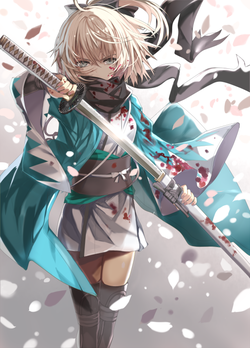Haori

|
Translation in progress This article is currently being translated from zhmoe:羽织; it may be incomplete, inaccurate or obfuscating. Moegirlpedia hopes that you can help with translating, proofreading, or copy editing this article. Progress:
30% This template was placed on 22:49, 22 June 2023 (UTC). The last edit was on 22:49, 22 June 2023 (UTC). |
 | |
| Base Info | |
| Moe Point | Haori (羽織、はおり) |
|---|---|
| Type | Clothing |
The haori is a type of Japanese clothing, and a moe point in the ACG subculture.
Introduction
The haori is worn as protection from the cold, as a sundress, on top of long, small sleeves. Although it has been used since the late Muromachi period, it wasn't until modern times that it began to be used universally.
Origin
The origins of the haori are widely debated, other similar clothes before its appearance were the dōfuku and the jūtoku. Men wore haori since the Azuchi-Momoyama period, Warring States-period soldiers wore them to protect themselves from the cold in the battlefield, putting haori outside of their armor. Because of its ease of use, it quickly became an everyday item. At that time, the term "haori" didn't exist, they were called dōfuku instead. As far as the parity of the clothing is concerned, it is used the same as the hitatare, daimon, and suou during the audience with the general, and in contrast to the hakama used in scholar uniforms, the haori were a lower-class item, existing as civilian clothing. On the other hand, outside of ranks and files, the "hakama and haori combo" is second only to the hakama in formal wear. Hakama were only rarely worn at festivals or cosplay events, but the "hakama and haori combo" is still worn in modern times as formal men's wear.
Jūtoku haori
It is worn outside the kimono and it is a type of outerwear. It has been around since the Kamakura period, and used as casual clothing, but into the Edo period, it became the formal wear of monks, doctors, artists, Confucians, and tea ceremony hall masters, among others. They are worn over casual kimonos with long hakama. It is still used in tea ceremony activities of the Machijin system.